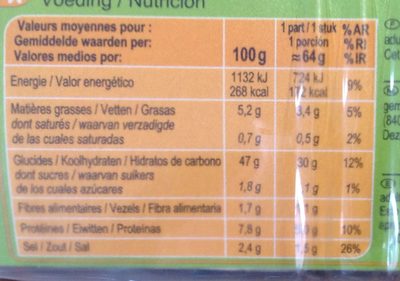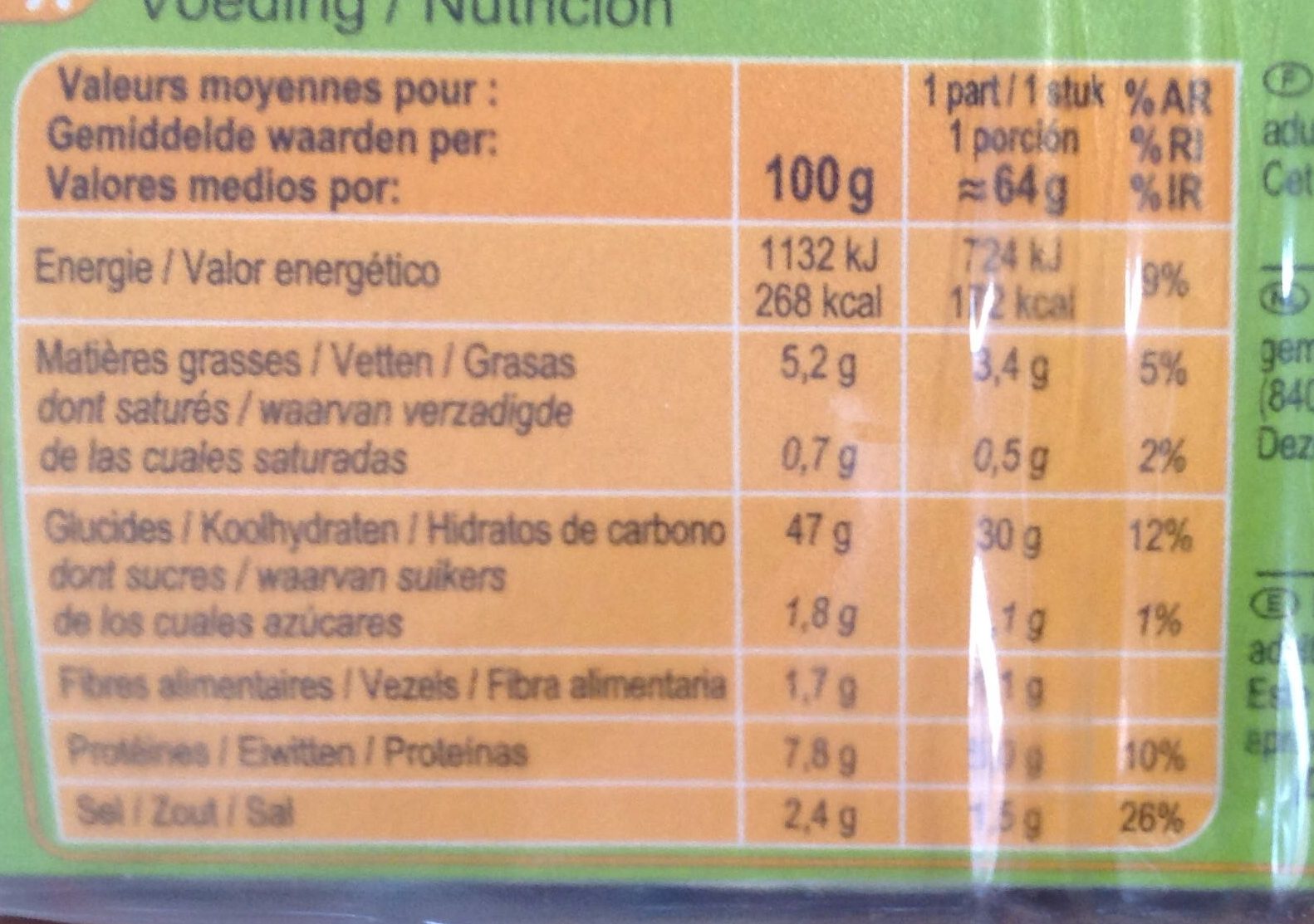Pâte à pizza Épaisse rectangulaire - Carrefour - 385 g
Aquesta pàgina del producte no està completa. Podeu ajudar a completar-la editant-la i afegint-hi més dades a partir de les fotos ja disponibles, o fent-ne més amb l'aplicació de androide o iPhone / iPad. Gràcies!
×
Algunes de les dades d’aquest producte les ha proporcionat directament el fabricant Carrefour.
Codi de barres: 3560070367221 (EAN / EAN-13)
Nom comú: Pâte à pizza prête à dérouler.
Quantitat: 385 g
Empaquetament: Plàstic, en:Fresh
Marques: Carrefour
Categories: Aliments i begudes amb base vegetal, Aliments amb base vegetal, Cereals i patates, Cereals i derivats, en:Pie dough, en:Bakery products, en:Pizza dough
Etiquetes, certificacions, premis: Fet a França
Origen del producte i / o dels seus ingredients: Ce produit est fabriqué en France à partir de blé origine Union Européenne.
Productor: Fabriqué en France par EMB 62510 pour Interdis.
Codi de traçabilitat: EMB 88516A - Vittel (Vosges, France), EMB 62510 - Liévin (Pas-de-Calais, France)
Botigues: Carrefour, carrefour.fr
Matching with your preferences
Entorn
Petjada de carboni
Empaquetament
Transport
Altres dades
Altres dades: 385g e Épaisse et rectangulaire.
Preparació: 1- Préchauffez le four à 200°C (Thermostat 6/7). 2- Sortez la pâte de votre réfrigérateur et déroulez-la immédiatement avec sa feuille de papier cuisson sur la plaque ou la grille de votre four. 3- Piquez la pâte avec une fourchette. 4- Disposez la garniture de votre choix. 6- Selon la recette, faites cuire environ 15 à 25 minutes à 200°C. Le temps de cuisson est à adapter en fonction de la coloration dorée de la pâte. Nous vous conseillons de ne pas congeler ou faire cuire au four à micro-ondes.
Condicions de conservació: À consommer jusqu'au / N° de lot : voir sur l'emballage À conserver entre 0°C et +4°C. Conditionné sous atmosphère protectrice. Utilisez votre pâte dès l'ouverture, et consommez-la après cuisson.
Servei al client: Interdis - TSA 91431 - 91343 MASSY Cedex - France.
Report a problem
Fonts de dades
Producte afegit per openfoodfacts-contributors
Última modificació de la pàgina del producte per roboto-app.
La pàgina del producte, també editada per beniben, carrefour, date-limite-app, driveoff, ecoscore-impact-estimator, kiliweb, org-carrefour, packbot, psine, quechoisir, segundo, teolemon, yuka.ZmI0dkw0QWFqTXNnbnNFRDh6UFMySXBrenFDRVFVR1BMYlFPSVE9PQ.











